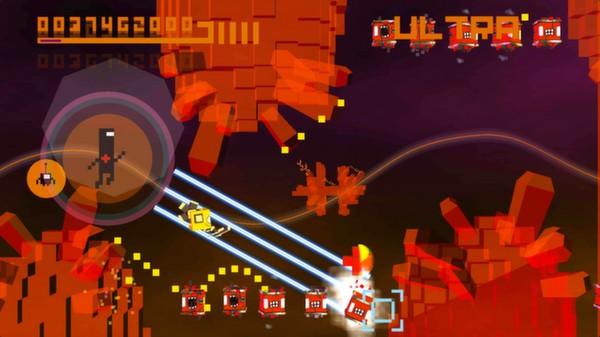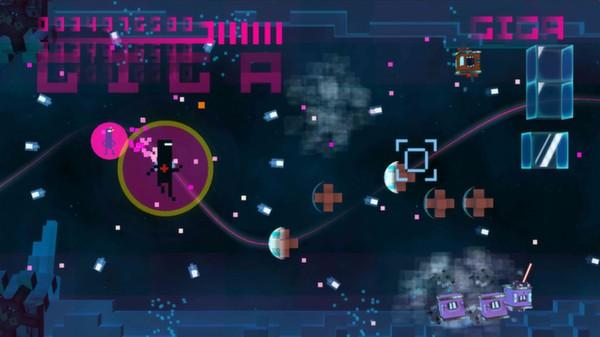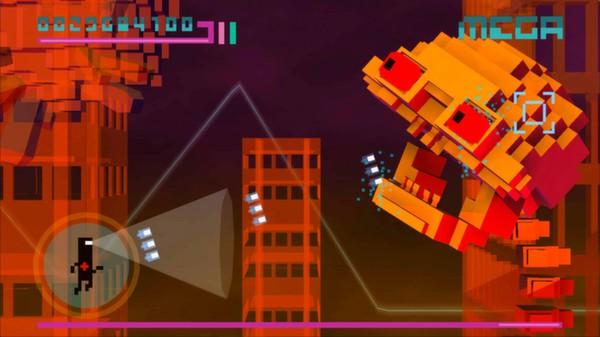- Wondering how to get Monopoly GO! free rolls? Well, you’ve come to the right place. In this guide, we provide you with a bunch of tips and tricks to get some free rolls for the hit new mobile game. We’ll …
Best Roblox Horror Games to Play Right Now – Updated Weekly
By Adele Wilson
Our Best Roblox Horror Games guide features the scariest and most creative experiences to play right now on the platform!The BEST Roblox Games of The Week – Games You Need To Play!
By Sho Roberts
Our feature shares our pick for the Best Roblox Games of the week! With our feature, we guarantee you'll find something new to play!Type Soul Clan Rarity Guide – All Legendary And Common Clans Listed!
By Nathan Ball
Wondering what your odds of rolling a particular Clan are? Wonder no more, with my handy Type Soul Clan Rarity guide.
BIT.TRIP FATE Review
The last Bit.Trip game to hit PC, Bit.Trip Fate is the penultimate entry in the six-title saga detailing Commander Video’s birth, life, death, and beyond. Although Fate fulfills the Bit.Trip model of “rhythm game wrapped in another genre,” it focuses more on gameplay than music, operating as an on-rails side-scrolling shooter that is supported—but not defined—by its dubstep soundtrack. This grants players more freedom, but also reduces the power of music and actions in the world of Fate.

Commander Video rides the inescapable rail of Fate.
The last Bit.Trip game to hit PC, Bit.Trip Fate is the penultimate entry in the six-title saga detailing Commander Video’s birth, life, death, and beyond. Although Fate fulfills the Bit.Trip model of “rhythm game wrapped in another genre,” it focuses more on gameplay than music, operating as an on-rails side-scrolling shooter that is supported—but not defined—by its dubstep soundtrack. This grants players more freedom, but also reduces the power of music and actions in the world of Fate.
Bit.Trip Fate begins where Bit.Trip Runner left off: Commander Video and friends have flown after robotic antagonist Mingrawn Timbletot. While Runner2 presents an alternate conclusion to Runner, in which Timbletot blasts Commander Video with a “reality unfusion beam” and sends him to the colorful worlds of the sequel, Fate pits our hero against the hate-filled machine and his minions in the dark recesses of space and beyond.
Commander Video’s journey through Fate takes him across six emotionally-titled levels in three different backdrops. Video travels from the cool, blue hue of Patience and Determination to the eerily empty yellow cityscape of Desperation and Frustration. The final two levels, Anger and Fall, take place in an entirely red and black river of lava, where the explosive world itself becomes a frequent deterrent to Video’s progress. While Fate has a fairly abstract story much like its Bit.Trip predecessors, it presents very clear emotions that Video is feeling and players are exposed to through the levels’ styles and layouts. Although there are no narrations, only a few pre-boss illustrated hints, you can tell that the Commander Video who offered Timbletot an olive branch of love in Runner is being lost to the barrage of hate being flung at him.
And that barrage is constant. Every level in Bit.Trip Fate is packed from start to finish with robotic enemies blasting Video with all they’ve got. Some sit stationary and spew bullets in multiple directions, while others fly at Video on a headless kamikaze mission of destruction. Aiming and firing while simultaneously dodging is a given in any bullet-hell shooter, but Video’s areas of escape are limited by the rail he travels. Since you can only move Video left or right on the rail—which ascends and dips in a set pattern—many tight, bullet-riddled sections require finding the one safe spot available.
Every time Commander Video successfully shoots an enemy, his “mode bar” will increase. Shooting enough enemies, or collecting enough “cores”—red plusses that enemies drop when killed—results in a mode up. These modes are shared across the Bit.Trip series, and progress from Nether to Hyper, Mega, Super, Ultra, Extra, and finally Giga. Each mode up provides a higher score multiplier, as well as improved weaponry for Video: in Hyper mode, his gun only shoots two slow streams of bullets, while Giga spits out four streams at a rapid pace. These modes are also used as a sort of health bar for Video; each time he is hit in the heart by an enemy, his mode will decrease one level. Getting hit while in Nether mode results in Video’s death and a game over for the level.
This system is definitely a boon to players new to either Bit.Trip or side-scrolling shooters. Unlike a game like Runner, where a single mistake was punished with death, players can be hit numerous times in Fate without serious repercussions. Friend bonuses also provide a leg up and appear frequently throughout every level. If collected, one of Video’s four friends will join him temporarily and provide an offensive boost to his weapon, like Commandgirl Video, who allows him to shoot two directions simultaneously, or Meat Boy, who turns his bullets into a giant laser. The friend will also circle Commander Video’s aura and deflect bullets that hit them.
While these features help make Bit.Trip Fate more accessible to beginners, there’s still plenty of soul-crushing challenge to be found. The lack of any sort of checkpoint is the biggest offender; while this is suitably retro to the Bit.Trip style, Fate‘s levels are punishingly long and average eight to ten minutes each. Bosses are the hardest part of most shmups—Fate included—and the primary cause of death. This means that every time you die to Timbletot or one of his bizarre cronies, you’ll get to replay the entire ten minute level leading up to him again. Even an optional checkpoint like in Runner2 would be a welcome addition to prevent keyboard-smashing frustration.
The other noticeable challenge is a lack of feedback when you’re actually hitting an enemy. Although your mode bar does increase as enemies are shot, watching where you’re aiming, dodging, moving, and the mode bar simultaneously is a nearly impossible feat. Enemies and objects do not light up or give audio feedback when hit, turning encounters into a guessing game of whether or not you’re landing shots. This lack of feedback also detracts from the usually player interaction-heavy aspect of the soundtrack. While defeated enemies produce a beat, and killing multiple enemies in succession creates a harmony, the use of sound is overall subdued in comparison to other Bit.Trip titles and feels more tangential than essential.
These issues create a disconnect from Bit.Trip Fate that make it harder to become immersed in, but definitely not impossible. Beyond the hair-tearing annoyance of dying to a boss for the fifth time, Fate is a consistently rewarding and compelling shooter that tells a touching story with minimalistic detail. The usual need to keep improving your high score and complete levels on a harder difficulty pervades Fate the same as its Bit.Trip brothers, and actually lulls you into thinking you might be able to do it on the next frustrating—but addictive—try.

The good

The bad
More articles...
Monopoly GO! Free Rolls – Links For Free Dice
By Glen Fox
Wondering how to get Monopoly GO! free rolls? Well, you’ve come to the right place. In this guide, we provide you with a bunch of tips and tricks to get some free rolls for the hit new mobile game. We’ll …Best Roblox Horror Games to Play Right Now – Updated Weekly
By Adele Wilson
Our Best Roblox Horror Games guide features the scariest and most creative experiences to play right now on the platform!The BEST Roblox Games of The Week – Games You Need To Play!
By Sho Roberts
Our feature shares our pick for the Best Roblox Games of the week! With our feature, we guarantee you'll find something new to play!Type Soul Clan Rarity Guide – All Legendary And Common Clans Listed!
By Nathan Ball
Wondering what your odds of rolling a particular Clan are? Wonder no more, with my handy Type Soul Clan Rarity guide.








 “
“ “
“